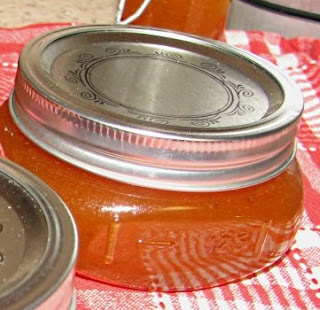A superfood that is
harvested from an Amazon palm tree (grown in Brazil). They have a
chocolate/berry flavour and are packed with antioxidants (more than any other
berry), amino acids and essential fatty acids.
ACETIC ACID
An organic compound (chemical formula CH3COOH)
that is an acidic, transparent liquid that gives vinegar a sour flavour. Vinegar
usually contains 4-6% acetic acid (the rest is mainly water with some trace
elements). Acetic acid is used as a food preserving ingredient when food is
lower in acidity (has a high pH).
ACID/ACIDIC
A compound or substance that contains acid (or has acidic
properties), including a sour flavour and a pH below 4.6 for home canning. This
pH level will turn certain dyes red (i.e. litmus testing). Vinegar contains an
acid called acetic acid; another common preserving ingredient is citric acid.
Acids may naturally occur in the ingredients or be added to the recipe to
increase the acidity and reduce the chance of spoilage occurring. All water
bath canning recipes are acidic, either naturally or with an acidic ingredient
added. Acidic preserves include bottled fruits, tomatoes, pickled vegetables
(including fermented vegetables), jam, jelly, marmalade, chutney, relish, salsa
and more. Follow specific preserving recipes to ensure food safety.
ALTITUDE
The distance (height) of your location to sea level,
measured in metres or feet. Processing charts in preserving recipes will list
different times (plus different pressure levels for pressure canning) because
water boils differently when comparing low and high altitudes.
Potassium
aluminium sulfate, also
known as potassium alum, potash alum, or alum. The chemical formula for alum is KAl(SO4)2 and it
naturally occurs on rocks after weathering (oxidation) of sulfide and potassium
minerals. Previously used in vintage preserving recipes to
create firm, crunchy pickles, alum is no longer recommended as it may cause
digestive issues. If food has been prepared with alum, it requires rinsing in
fresh clean water several times prior to consumption. Our recipes do not
recommend using alum.
Substances that reduce oxidation (browning) of fruit that is
light coloured, like apples and pears. Antioxidants that might be added to
preserving recipes include ascorbic acid (i.e. vitamin C powder) and/or citric
acid (i.e. citric acid powder, lemon juice or lime juice). These antioxidants
also increase acidity (lower the pH) to assist with food preservation.
ARTIFICIAL
SWEETENER
Non-nutritive sweeteners used as a sugar
alternative, including aspartame, cyclamate, monk fruit extract, saccharin,
stevia and sucralose. These synthetic sweeteners are usually much sweeter than
sugar but each vary in sweetness level (and to your taste/preference).
Sucralose and stevia-based sweeteners are heat stable and may be used in fruit
canning recipes (water bath canning). Saccharin or aspartame-based sweeteners
are best added prior to serving (i.e. sweeten fruit after opening a jar) as
sweeteners can change during processing (during the boiling water bath),
resulting in bitter or undesirable flavour changes in your sweetened preserved
food. We recommend testing a small batch for your home canning project to see
which sweetener and quantity you prefer, as directed in each water bath canning
recipe.
ASCORBIC ACID
Also
known as l-ascorbic acid or ascorbate, ascorbic acid is the chemical name for
vitamin C. Ascorbic acid is present in a high level in lemon juice, which is
why it is commonly added to prevent oxidation (browning) of light-coloured
fruits, like apples and pears. Pure vitamin C powder (no additives or flavour
added) is available from pharmacies and online suppliers (which may stock a
crystal form of ascorbic acid).
BACTERIA
Microscopic sized microorganisms that are found in
nature (soil, water and air). Some bacteria is used to ferment food, i.e.
making sauerkraut. Other types of bacteria can be harmful when they are present
in low-acid food because when they quickly multiply, they can cause disease, food
spoilage and/or produce mycotoxins which are only destroyed at a high temperature
(116°C/240°F) for a specific time. This temperature cannot be achieved in a
water bath canner, which is why it is important that food is high acid (pH 4.6
or less) before being preserved in a water bath canner, and low acid food is
preserved in a pressure canner.
Part
of a two-piece jar lid, i.e. mason jar bands. Bands are threaded, and screw
onto the jar rim, holding the flat metal seal onto the jar (especially
important when jars of preserves are being processed). After jars have cooled
down (usually 12-24 hours after processing), bands are removed from the jars as
the vacuum seal created during processing holds the flat seal part of the lid
onto the jar tightly.
Author: Megan Radaich
Image Credit: Megan Radaich
Publication: www.foodpreserving.org



